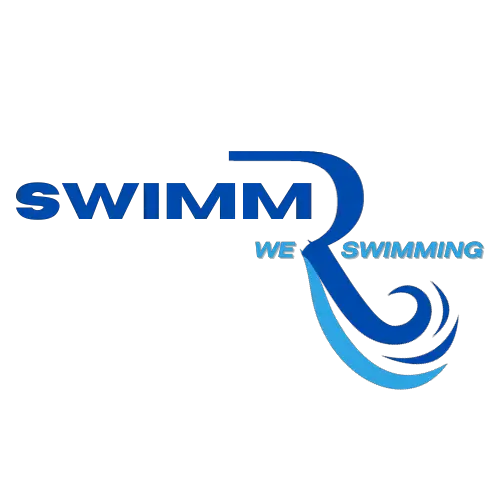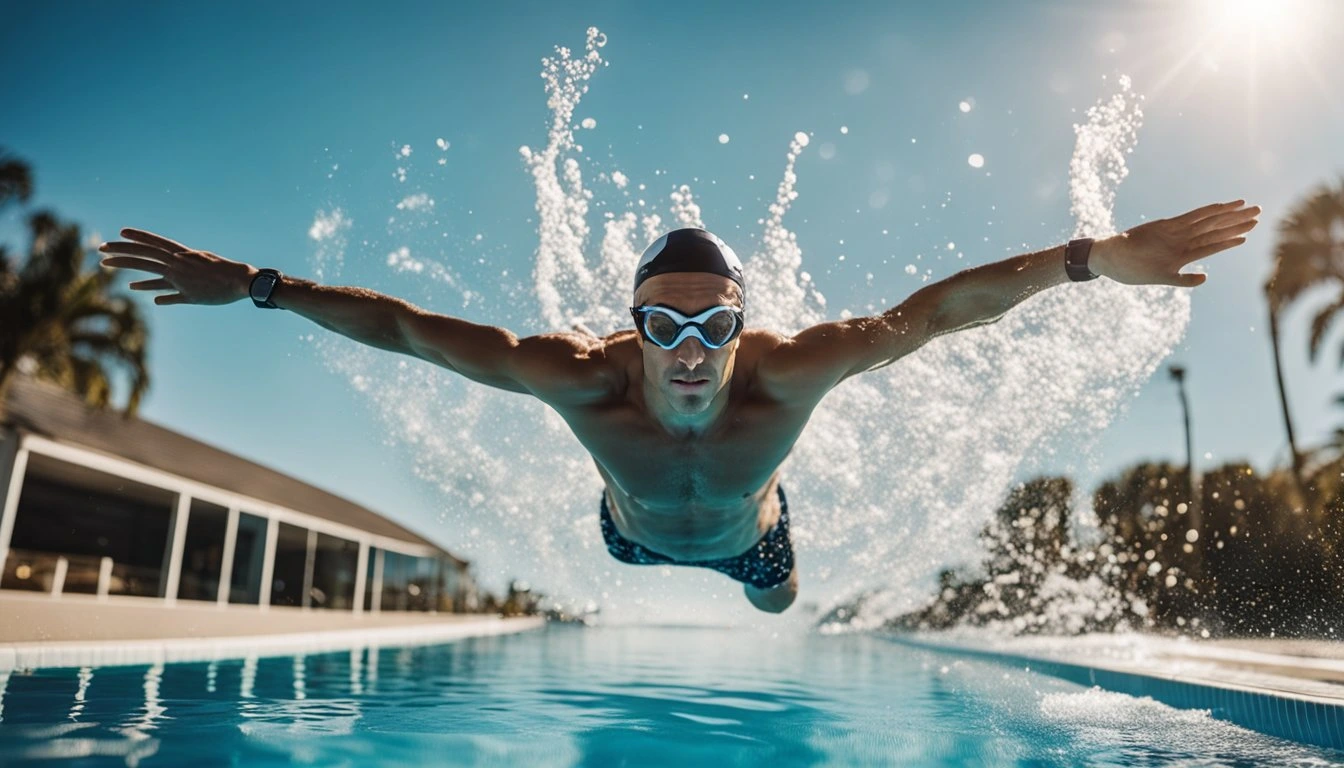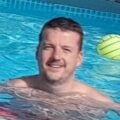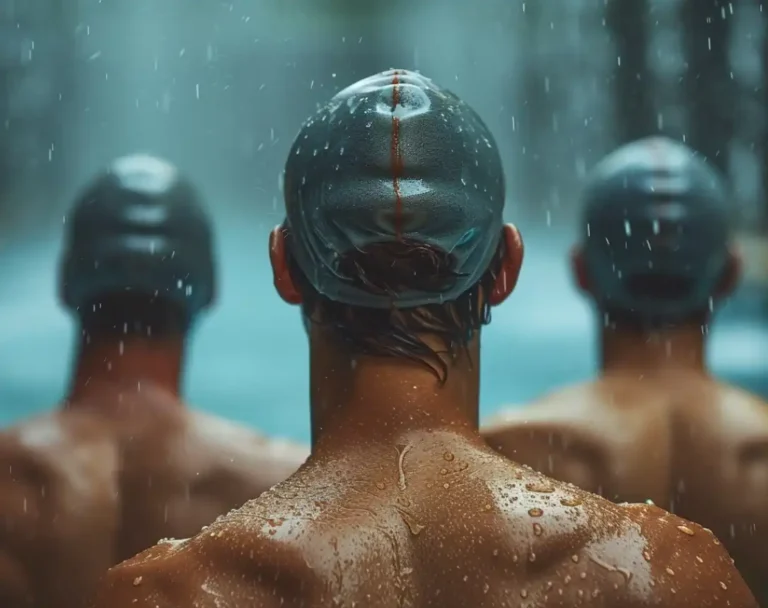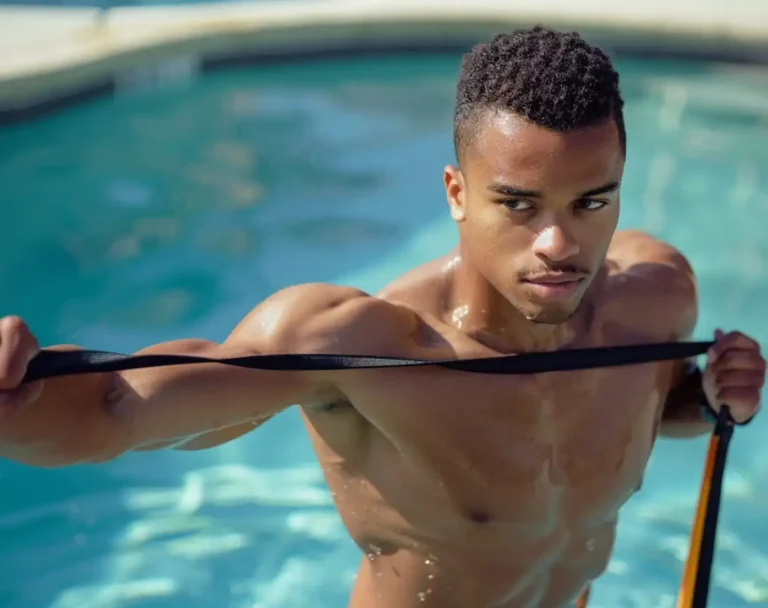Initiating your swimming journey is quite straightforward, however, evolving into a competitive swimmer of professional caliber presents significant challenges. Observing the unparalleled records of Michael Phelps and the remarkable feats of Katie Ledecky, and juxtaposing these with one’s personal swimming endeavors, can offer profound insight into the crucial skills required for professional swimming success.
Qualities You Need to Become A Professional Competitive Swimmer
To become a professional competitive swimmer, you must possess a combination of physical attributes, mental traits, and a dedicated work ethic. In my experience, the 10 most important characteristics are:
- Exceptional Physical Fitness: Competitive swimmers need to have high levels of cardiovascular endurance, muscular strength, and flexibility to excel in the water.
- Discipline and Dedication: The sport demands rigorous training schedules and commitment to regular practice.
- Mental Toughness: Competitive swimmers must handle the physical and mental pressures of training, competition, and goal-setting.
- Strong Work Ethic: Professional swimmers put in countless hours of training and are often early risers and hard workers both in and out of the pool.
- Focus and Concentration: Maintaining concentration during races is crucial, and professional swimmers have to stay mentally sharp to make split-second decisions.
- Resilience: Overcoming setbacks, such as injuries or losses, is part of a professional swimmer’s journey.
- Self-Motivation: Many swimmers are self-driven and set high standards for themselves.
- Technical Skills: Proficiency in various swimming strokes and a keen understanding of swimming techniques are vital.
- Goal-Oriented Mindset: Professional swimmers set specific, measurable, and achievable goals to continually improve their performance.
- Team Player: Even though swimming is an individual sport, many competitive swimmers start in team environments, and teamwork can foster a sense of camaraderie and motivation.
These characteristics, when combined with expert coaching and a supportive network, are integral to a successful career as a professional competitive swimmer. The swimming career of two of the most popular athletes of our time and our own aquatic journey will show you when it is the best age to start with swimming on a competitive level, how far you can go and what you can expect after.
Michael Phelps: A Remarkable Swimming Career

Michael Phelps, a true aquatic legend and the aquatic idol of our youth embarked on his swimming journey from a young age. Born on June 30, 1985, in Baltimore, Maryland, he was introduced to the water at just seven years old. His two older sisters were already involved in swimming, which naturally sparked his interest in the sport. Under the guidance of his coach, Bob Bowman, he began honing his swimming skills.
Phelps’ early dedication was undeniable. He joined the North Baltimore Aquatic Club (NBAC), a well-known local swim club, and his rigorous training routines began to shape his promising career. His innate talent and unwavering commitment were evident even during his teenage years.
As he moved into his mid-teens, Phelps started competing at the national level. His remarkable performances drew attention, and by the age of 15, he had already secured a spot on the U.S. National Swim Team. This marked a pivotal moment in his swimming career, setting the stage for even greater achievements.
Phelps was known for his versatility, excelling in various swimming styles, including freestyle, butterfly, and individual medley events. His exceptional abilities were showcased in the 2004 Athens Olympics when he brought home six gold medals and two bronze, catapulting him into the global swimming spotlight.

However, his journey was not without challenges. Balancing rigorous training schedules, competition, and personal life was demanding, but Phelps’ dedication remained unwavering. In the following years, he continued to break records and accumulate accolades, becoming the most decorated Olympian in history.
Phelps’ swimming journey has been a testament to hard work, determination, and an unrelenting passion for the sport. From his early years at NBAC to his remarkable Olympic achievements, his story continues to inspire me and many other swimmers and sports enthusiasts around the world.
Katie Ledecky: A Splendid Aquatic Odyssey

Katie Ledecky, a renowned name in the world of swimming, commenced her remarkable journey at a tender age. Born on March 17, 1997, in Washington, D.C., she first encountered the pool’s glistening waters at the age of six. Encouraged by her mother, a former collegiate swimmer, and coach, Ledecky’s passion for the sport was ignited.
Katie’s early years in the water were marked by a relentless pursuit of excellence. She joined the Nation’s Capital Swim Club (NCAP), a prominent local swimming organization, where her talent began to blossom under the watchful eye of her coach, Bruce Gemmell. From an early age, her dedication to swimming was unwavering.
As Katie transitioned into her teenage years, her competitive spirit shone brightly. She started competing at the national level and quickly made a name for herself. Her natural talent, coupled with her tireless training regimen, set her apart from her peers. By the age of 15, she had already earned a place on the U.S. National Swim Team, marking her arrival on the international stage.

Katie Ledecky’s prowess extended across various swimming disciplines, with her specialty being long-distance freestyle events. She possessed an extraordinary ability to maintain her speed and stamina over extended distances. Her world-class performances were on full display during the 2012 London Olympics, where, at the age of 15, she secured her first Olympic gold medal in the 800m freestyle, instantly becoming a sensation in the swimming community.
In the years that followed, Ledecky’s journey was punctuated by record-breaking swims and numerous accolades. She continued to dominate the international swimming arena, solidifying her status as one of the greatest distance swimmers in history. Her accomplishments at the Olympics and World Championships are a testament to her unwavering dedication and unparalleled skill.
Katie Ledecky’s journey in swimming has been a story of perseverance, hard work, and an unquenchable thirst for victory. From her early days at NCAP to her extraordinary achievements at the Olympic level, her inspiring tale continues to motivate aspiring swimmers and fans of the sport worldwide.
Louis: A Dive into Competitive Swimming
My adventure in the world of swimming began when I was just five years old, driven by curiosity and a penchant for mischief. I used to cause quite a ruckus with a friend during swim sessions, but little did I know that these antics would change the course of my life.
Recognizing my potential, I was swiftly moved from the “fun group” to a more serious swim group—a pivotal moment that ignited my lifelong passion. Music, particularly keyboard playing, had been an interest of mine, but the allure of the pool quickly took center stage, and I dedicated myself wholeheartedly to the sport.
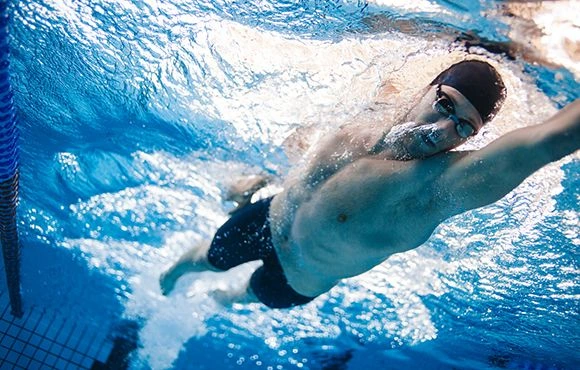
As my dedication grew, so did my training regimen and my participation in competitions. The taste of victory and the medals that followed fueled my desire to excel even further. However, the limitations of my small village swim club eventually pushed me toward the grander opportunities offered by the nearby city’s largest swim club.
In the third grade, I made the life-changing decision to join the city’s premier swim club, embarking on a daily journey that involved a 20-kilometer commute to chase my passion. The transition to the city’s sports school seemed like the natural progression, requiring me to wake up early for morning training sessions before school and return home only after the evening training sessions had concluded. These were grueling years, but they honed my skills, making me a dominant force in my age group at the state level and even securing a spot in national competitions, where I achieved an impressive 9th place in the 200m backstroke.
My life revolved around swimming, with 5 to 7 weekly training sessions and jam-packed weekends filled with swim meets. I even managed to juggle schoolwork in between, thanks to my trainer, who provided meals and a brief respite for homework before practice. However, a muscle strain forced me to miss both state and national championships—a bitter setback in my otherwise stellar career.
As the strains of an impending high school graduation and dwindling motivation crept in, I faced a crossroads. Embracing the philosophy of giving my all or nothing at all, I made the heart-wrenching decision to step back from competitive swimming. My dedication and achievements in the pool had left an indelible mark on my life, and now I turned my attention toward the pursuit of academic excellence.
My swimming journey, from a mischievous youngster to a competitive athlete, was marked by dedication, sacrifice, and unwavering commitment—a testament to the incredible passion that swimming can ignite in the hearts of those who dare to dive in.
Stefan: A Journey from Swimming to Lifesaving
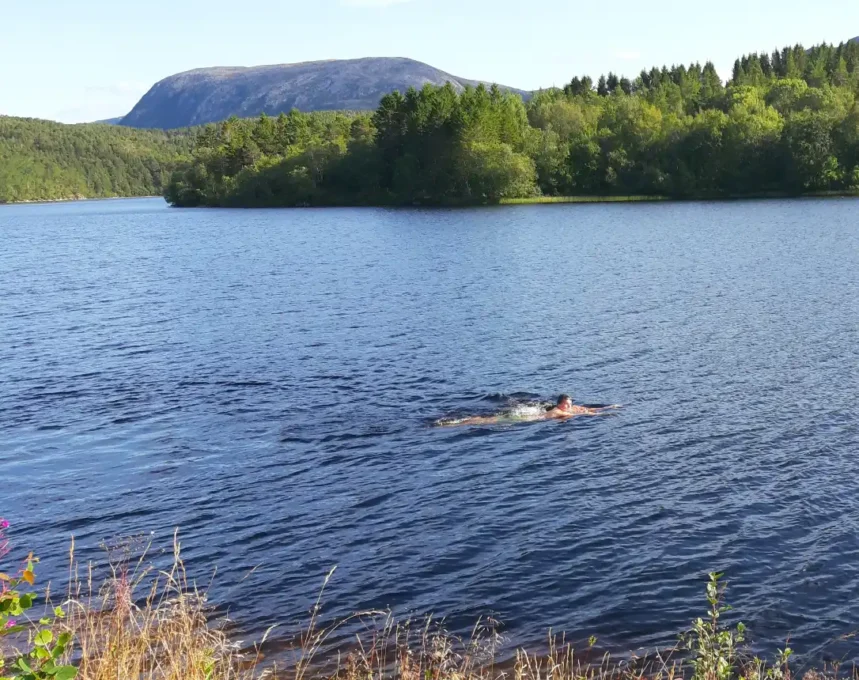
I began my aquatic journey at the age of six, under the watchful guidance of my aunt, who lived just opposite the local swimming pool. Every morning, without fail, she would dive into the water, and it wasn’t long before I followed suit. It was here that I not only learned to swim but also proudly achieved my first swimming milestone – the coveted “Seepferdchen” badge.
My hometown became the stage for my early swimming days as I joined the local swim club, following my older sister. Initially, my participation was sporadic, limited to city and state-level competitions. However, as my passion grew, so did my training sessions, becoming increasingly demanding.
Around the age of ten, the prospect of joining a sports school emerged. At that point, I made the conscious decision to steer clear of such an all-consuming path. The idea of dedicating my entire life to swimming didn’t resonate with me, especially considering family concerns about athlete-related heart issues.
From that moment, my competitive spirit waned, and after a few years, my enthusiasm dwindled. It was during this time that I discovered the world of lifesaving, and it marked a refreshing shift in my journey. I found myself in a vibrant atmosphere, surrounded by new insights, guided by an enthusiastic coach, and bonding with an incredible team.
Yet, in the second year of my lifesaving journey, a shift in focus from the coach became apparent. The dynamics changed, and the male members of our team felt increasingly sidelined. For instance, we had to climb out of the pool just to interrupt the coach’s conversations with the female members – a clear indication that we weren’t the main focus. After numerous fruitless discussions, we decided to part ways with the team.
Since then I practiced swimming in many different ways, like diving, 24h swim trails, kite surfing. In 2021 I started to practice ice swimming with some friends. The freshen cold water gives a great thrill and set back to focus on important things.

Despite the challenges and shifts in my swimming journey, my love for the water has remained constant, then and now. The pool and the water have always felt like home. My favorite discipline has been, and continues to be, breaststroke. While I’m comfortable with freestyle and backstroke, I’ve always had an aversion to the butterfly stroke.
I preferred short distances, initially in 25m pools, and later transitioning to 50m. For me, competitive swimming met its limit at the 200m mark. Swimming is in my blood, and the water is where I feel most at peace.
Comparing The Journeys and Key Takeaways
In the vast sea of competitive swimming, the trajectories of Michael Phelps, Katie Ledecky, Stefan and myself serve as diverse compass points, each revealing unique facets of a swimmer’s journey to the pinnacle of athletic achievement.
Phelps and Ledecky’s careers share a common thread of unwavering dedication. Phelps, with his unparalleled 23 Olympic gold medals, and Ledecky, dominating long-distance events, showcase the significance of early immersion, rigorous training, and a precision-focused approach. Their journeys underscore how singular dedication and a relentless pursuit of excellence are foundational to reaching the zenith of competitive swimming.
My journey unfolds as a tale of adaptability and transition. Progressing from mischievous beginnings to serious competition, I encountered setbacks in a small village swim club. The pivotal shift to the city’s premier club posed challenges, but a muscle strain steered my course toward academic pursuits. It’s a testament to the fluidity of life’s currents and the resilience needed to navigate unforeseen challenges. Stefan, on the other hand, embraced a different form of adaptability. Choosing to step away from competitive swimming, he explored various aquatic disciplines, illustrating the importance of navigating changing currents and finding fulfillment beyond the confines of competitive lanes.
Examining these journeys collectively reveals essential qualities crucial for summiting the peaks of competitive swimming. The combination of early immersion, rigorous training, and a precision-focused mindset, as seen in Phelps and Ledecky, highlights the significance of discipline and meticulous preparation. Stefan and me contribute the valuable lesson of adaptability, showcasing the need to navigate setbacks and find fulfillment beyond traditional competitive structures.
FAQ – Frequently Asked Questions
What are the main qualities of a professional competitive swimmer?
Professional competitive swimmers need exceptional physical fitness, discipline, mental toughness, a strong work ethic, focus, and resilience, among other qualities.
Can anyone become a professional competitive swimmer?
While it requires immense dedication and hard work, with the right qualities and training, anyone can aspire to become a professional competitive swimmer.
What’s the difference between competitive swimming and other swimming disciplines?
Competitive swimming focuses on racing and time trials, with strict rules and regulations. Other disciplines, like recreational swimming, emphasize leisure and fitness.
Who are some famous professional competitive swimmers?
Notable professional competitive swimmers are Michael Phelps, Ian Thorpe, Katie Ledecky, Aleksandr Popov and many others who have left their mark on the swimming sport.
I hope you found my insights on professional competitive swimmers and their qualities interesting! Feel free to leave a comment and tell me about your experiences.
